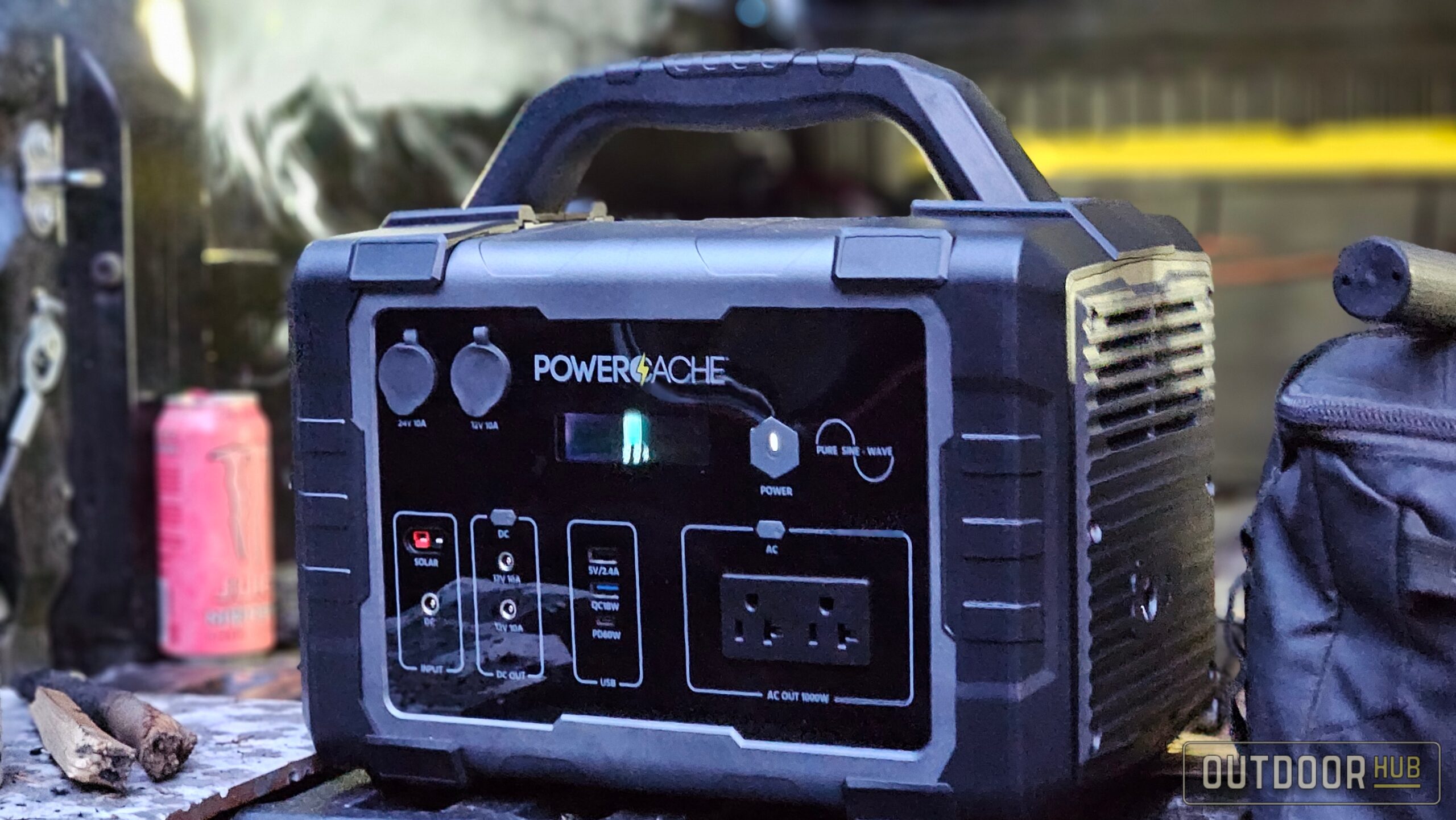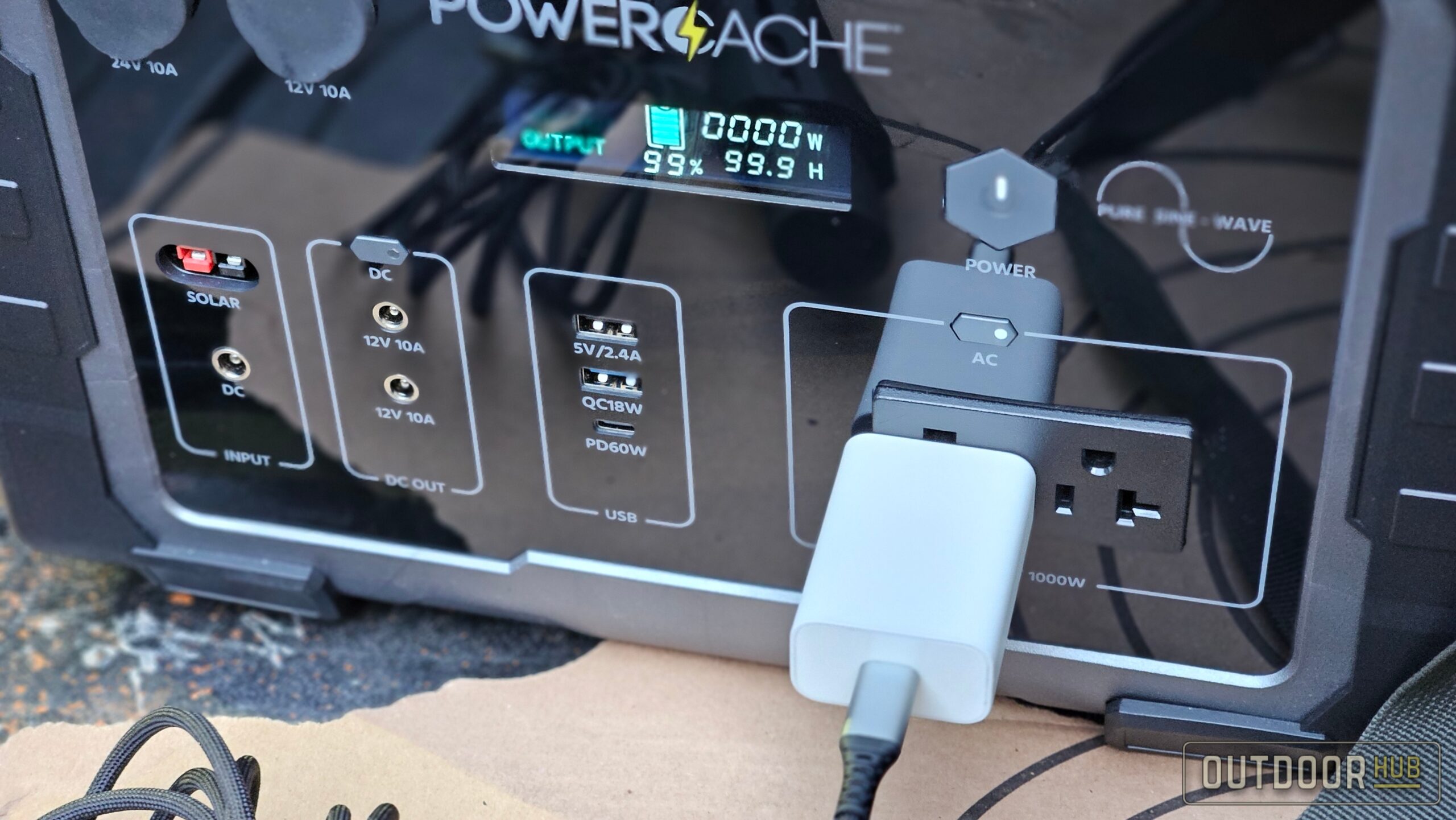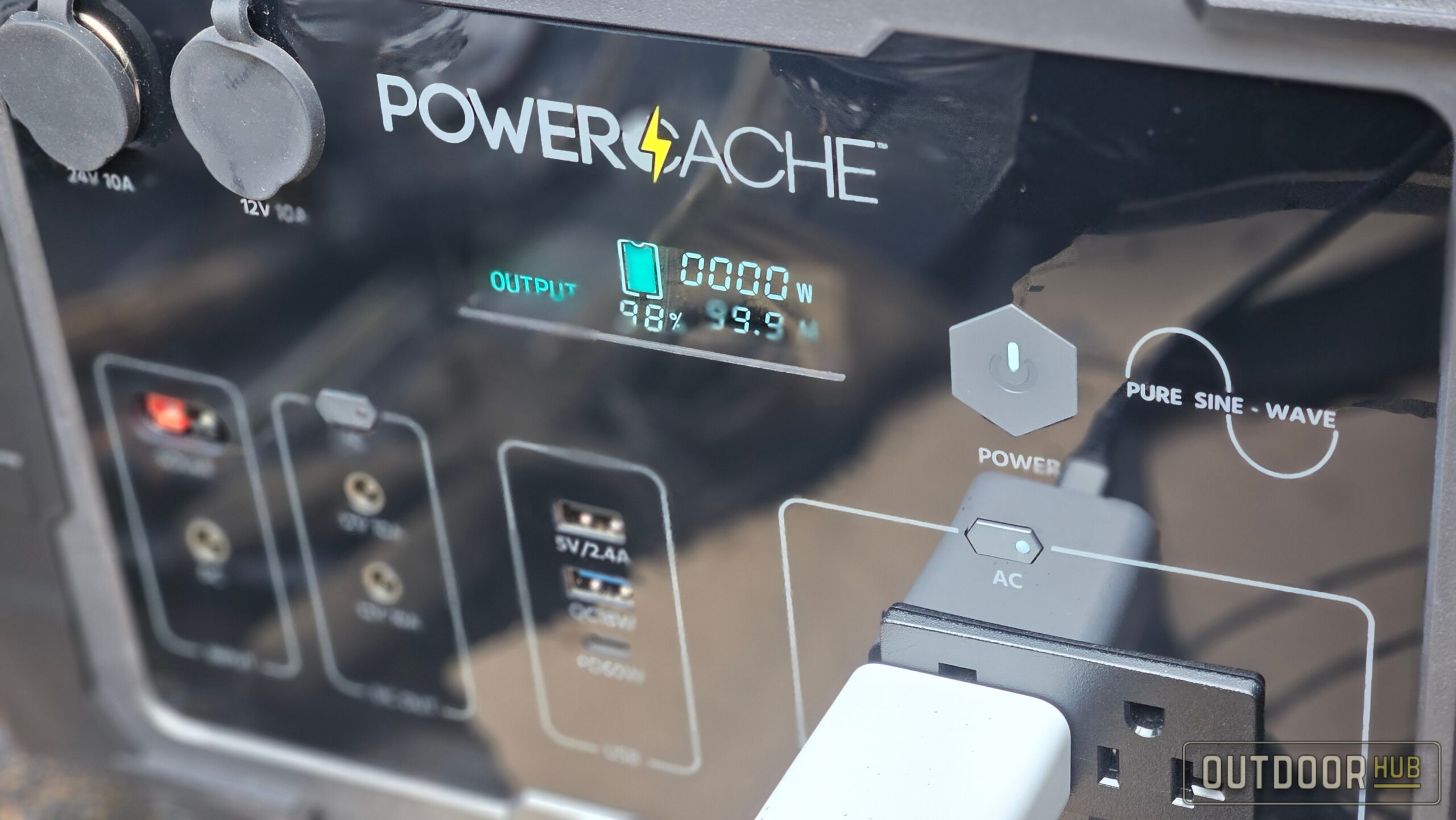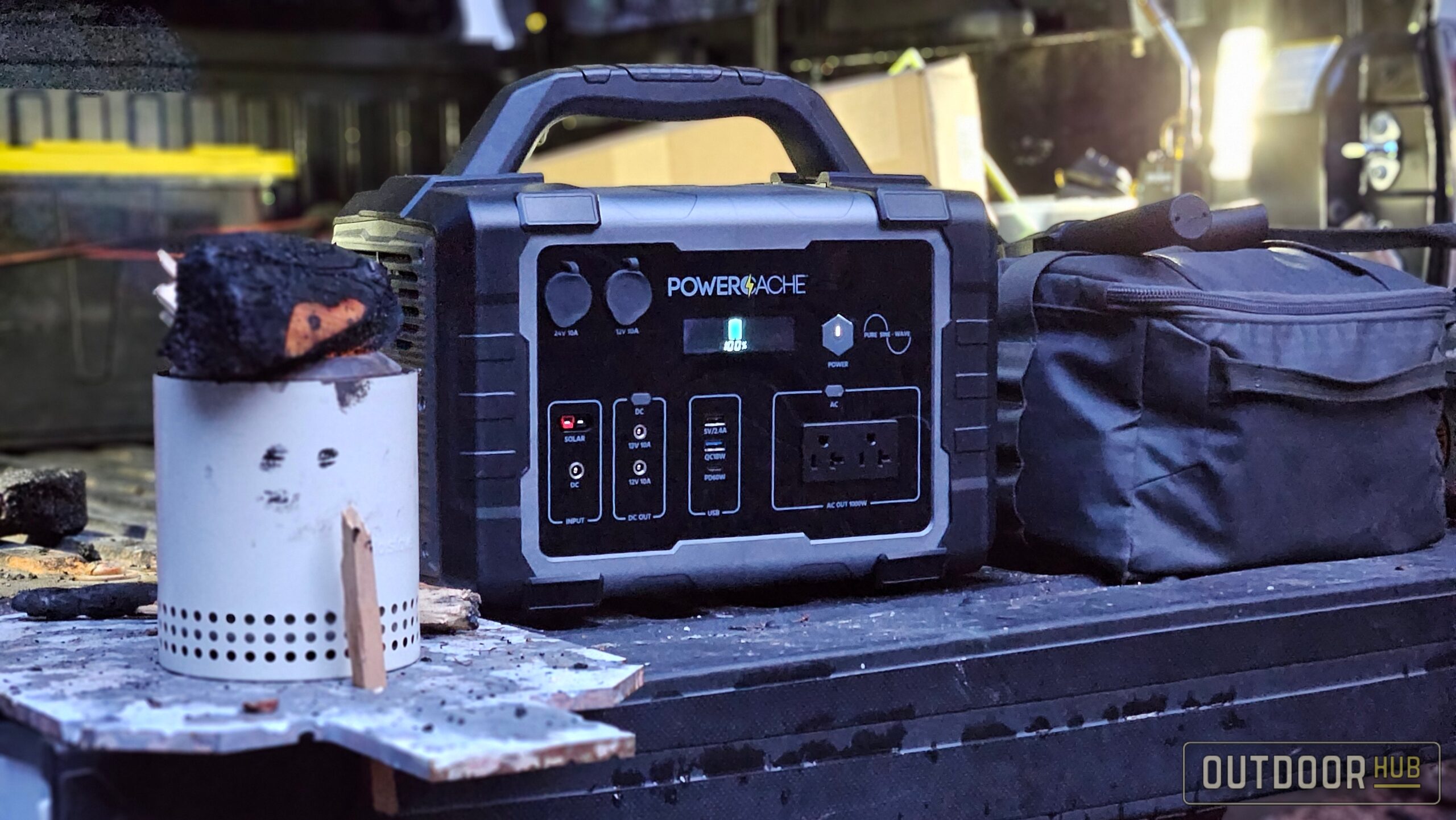Luke Cuenco 01.05.24

Whether you’re planning a trip to the beach, camping in the mountains, or just want to have a spare source of power during weather emergencies, battery backup power generators are more affordable and useful than ever. Monoprice has just debuted the new PowerCache 1000 Lithium Portable Power Station. Like other power stations, it’s capable of powering most small appliances and has a couple of other handy features packed into it that might make it worth keeping in your vehicle if you’re an avid weekend adventurer, or in the trailer or RV when you go camping. I’ve been lucky enough to be able to test one of these units out for the better part of two months and today I’ll share my observations and experiences with you about the PowerCache 1000.
More Power Station Reviews @ OutdoorHub:

OHUB Review: The Monoprice PowerCache 1000 Portable Power Station
- A Clean, Quiet Alternative to Traditional Gas Generators
- Small, Compact Design
- Ideal For Road Trips, Tailgating, Camping, Off-Road, Overlanding, Off-Grid Living, Garage, Workshop, Backyard, Jobsite, Weather-Related Disasters, and Emergency Situations
- Operates Almost Silently, Delivering Clean, Safe, Hassle-Free Power
- Pure Sine Wave Output Safely Powers Sensitive Electronics and Appliances with Motors
- Keep Smartphones, Tablets, Laptops, Cameras, Drones, Lighting, Wi-Fi Routers, Power Tool Battery Chargers, and Small Appliances Powered Longer
- Versatile Port Options Include 120V AC, USB-C PD, USB-A, 12V and 24V Car and RV Ports, Multiple DC Outputs
- Third-Party Certified to Meet the Industry’s Strictest Standards for Safety
- Multiple Built-In Safety Features Including Overload and Short-Circuit Protection
- 2-Year Limited Warranty

Right off the bat the PowerCache 1000 puts itself surely in the category of a “light duty” generator. While the PowerCache can put out 120V AC power, it’s limited to tools and electronics that draw less than 15A of power. This means that most things like laptops, small refrigerators, fans, and other low-amperage devices should be fine but more powerful items like vacuum cleaners, or large power tools won’t get the juice they need from the PowerCache 1000. Thankfully I don’t need a power generator for that. My main goal is to be prepared to charge the devices that I use on shooting and hunting trips which include my cameras, tablet, and cell phone. For this, the PowerCache 1000 is not only adequate but probably overpowered.
User Interface and Charging Ports
The PowerCache 1000 comes with two out of three total methods for charging the unit. These include the 29.4V Car Port Charging Adapter that can also be used with the boat or RV. This method allows you to charge the PowerCache on the road while you’re en route to your destination, or keep it topped up in between uses for when you need it most. If you’re just keeping the PowerCache at home, or have the time to do it in advance, the far more efficient method of charging the PowerCache is to plug it in at home or in the RV using the 120-volt AC charging port. This method of charging takes about 7-8 hours which should be easy enough to take care of overnight.

If you’re a more adventuring type or want an extra layer of defense against an extended power outage, the PowerCache is also capable of being charged via any 36-volt solar array up to 400 W and the correct solar input adapter. A huge downside of Monoprice’s website is that they don’t currently offer any solar arrays you can purchase along with any of the PowerCache generators. However, Amazon has a wide variety of compatible devices, and if you can get a 400W charging unit you can expect to charge the PowerCache 1000 in about 4-5 hours with full sun. However, real-world experience with solar chargers tells me this is likely to take just as long if not longer than just plugging it into a wall outlet.

If you’re trying to use the PowerCache as an in-line UPS (Uninterruptable Power Supply) you won’t be able to do this. The specs say it takes 7-8 hours to recharge from 0% when plugged into AC wall power. The battery holds 1075Wh (so that means it can run 1075 watts for 1 hour, or 107.5 watts for 10 hours, etc). That implies the AC charger is only adding ~120Wh for each hour of charge.The AC wall adapter isn’t pushing enough power to keep your stuff running continuously unless you have less than about 100w of gear plugged in. The more powerful Solar Array is similarly incapable of being used in this manner but both methods would still increase the total time your PowerCache would run before going completely dry. This is a battery bank for powering things off the grid, not a UPS.

The user interface is fairly simple and only includes three buttons, one to power the unit on, and one smaller button each for DC and AC power output which can be toggled on and off independently. None of the outlets are powered until you both turn on the unit and select which power output type you’d like to use. Even though they can be selected independently, both AC and DC power outputs are capable of running at the same time and running multiple devices. The simple display will always show the remaining power level and also indicate the time left before the generator needs to be recharged. This simple rotating display gives you all the information you need on the status of the unit and no additional displays or buttons are needed keeping operation simple even for inexperienced users.

Value Consideration – Is the PowerCache 1000 for you?
The PowerCache 1000 is putting quite a bit on the table for a good set of features and available power. Compared to other similarly equipped units on the market from other companies, the PowerCache 1000 from Monoprice has them all beat for a very low asking price of $550. The PowerCache series excels in this respect as the unit is reliable and has plenty of charging ports for both the unit itself and the connected devices. However, more durable and feature-rich units are out there and they will cost you a fair bit more. Before choosing the PowerCache series, make sure that you don’t plan on subjecting the generator to any extreme shock, moisture, or abuse. These neat units are perfect for the weekend camper, use at home during emergencies, or to have in the car or truck when you need to top up your devices on the road. For a price of $550, the PowerCache 1000 is well worth the price for entry if you’re looking for a simple, and reliable backup generator that makes no noise and can be used indoors. For its price and level of flexibility, I don’t think you can find a better value option for an electric backup generator on the market.


